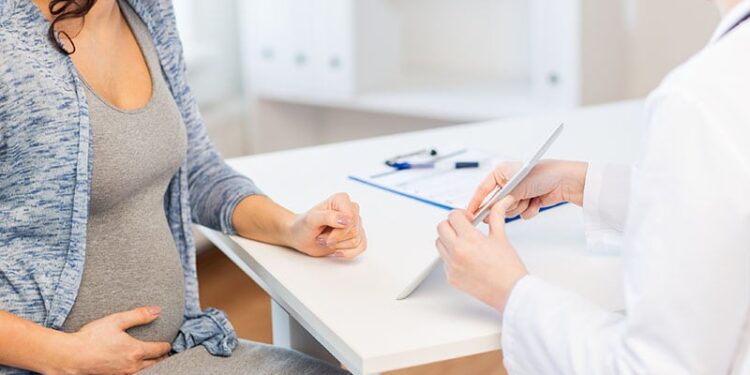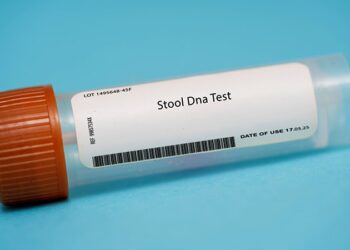MINNEAPOLIS — The vaginal birth after cesarean (VBAC) calculator may overestimate the likely success rate of a VBAC following induction of labor (IOL), according to research presented at American College of Obstetricians and Gynecologists (ACOG) 2025 Annual Meeting.
The VBAC calculator does not distinguish between IOL and spontaneous labor, noted Daniel Lorido, MD, MPH, of Montefiore Medical Center in the Bronx, New York, and his colleagues.
“TOLAC [trial of labor after cesarean] patients who are undergoing IOL are significantly less likely to have a successful VBAC as compared to TOLAC patients undergoing spontaneous labor,” Lorido and his colleagues concluded. “When offering indicated or elective inductions of labor, careful, individualized counseling on the likelihood of VBAC success is essential because a failed trial of labor after cesarean may cause increased perinatal morbidity when compared to successful VBAC or scheduled repeat cesarean delivery.”
Noting that TOLAC IOL has higher rates of failure than spontaneous TOLAC, the authors sought to determine the success rate for TOLAC IOL and how it compares to spontaneous IOL and to the VBAC calculator’s estimation of success for IOL.
The researchers retrospectively analyzed all cases of patients who had a history of one prior cesarean and were undergoing an IOL between January 2020 and December 2023. All 270 patients had full-term, live-born, head-first, singleton births.
Just over half the patients (51.1%) had a successful VBAC, but the VBAC calculator had predicted that 63.6% of patients would be successful (P < .0001). The national rate of successful VBAC is 74.3%, the authors noted, but that includes both IOL and spontaneous labor. Factors associated with a successful VBAC include a history of prior vaginal delivery (P = .0008), history of a prior VBAC (P < .0001), and no history of arrest disorder (P = .0007).
Specifically, 72% of patients with a prior vaginal delivery had a successful VBAC after IOL compared to 46% of patients without a previous vaginal delivery. Similarly, 82% of patients with a previous VBAC had a successful VBAC after IOL compared to 43% of patients without a previous VBAC. Among the patients who had a successful VBAC, only 22% had a history of arrest disorder.
The researchers did not find any associations between successful VBAC and age, BMI, chronic hypertension, or diabetes — even though age, weight, and treated chronic hypertension are all variables in the VBAC calculator score. Notably, the VBAC calculator was documented as a part of TOLAC counseling in only 11.39% of cases.
“In spite of these findings, we encourage offering TOLAC to all eligible patients while cautioning that accurate success rates be determined and communicated properly,” the authors wrote. “TOLAC patients should be counseled about lower success rates of VBAC post-IOL to assist in their decision-making process.”
It’s important to keep in mind when considering these findings that they are all from a single center, Audrey Merriam, MD, MS, an associate professor of obstetrics, gynecology, and reproductive science at Yale School of Medicine, New Haven, Connecticut, told Medscape Medical News.
“There may be practice patterns or preferences at this one center that could impact these results,” Merriam said. She also noted that the study was moderately sized, which also adds caution to interpretation of the findings.
That said, the study’s key takeaway is that “the VBAC calculator may not be as accurate when predicting TOLAC success for women who have had any prior cesarean delivery, not just a cesarean delivery for an arrest disorder,” Merriam said. “The calculator is still just an estimate, so the decision to attempt a VBAC is still between the pregnant person and their physician/provider.”
While the calculator provides one piece of information for patients and providers to consider when deciding whether to attempt a TOLAC, “ultimately, the decision is a shared decision involving risks and benefits between the patient and provider,” Merriam said.
The authors did not report receiving any external funding or having any disclosures. Merriam reported having consulted for Lily Link.
Tara Haelle is a science/health journalist based in Dallas.
Source link : https://www.medscape.com/viewarticle/vbac-calculator-overestimated-success-induction-labor-2025a1000ft4?src=rss
Author :
Publish date : 2025-06-12 13:12:00
Copyright for syndicated content belongs to the linked Source.














